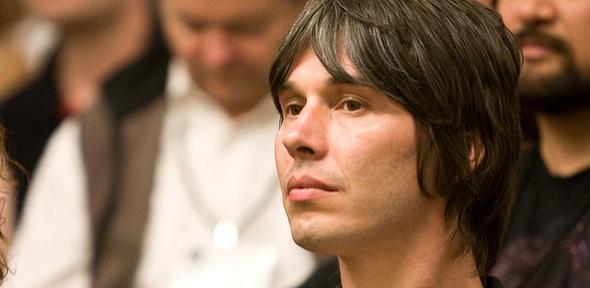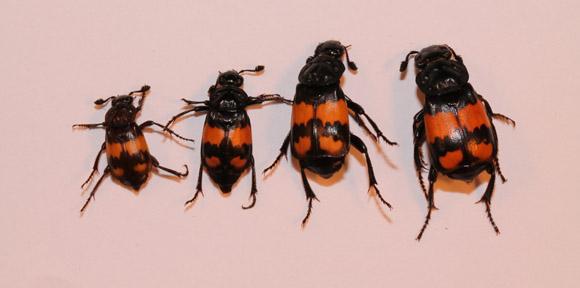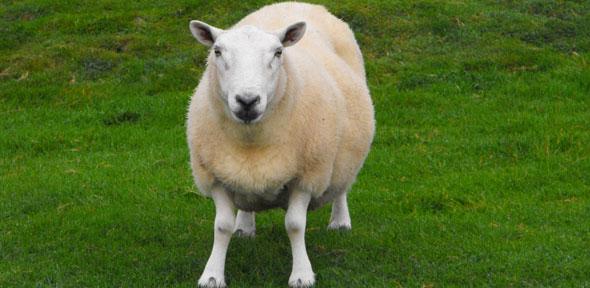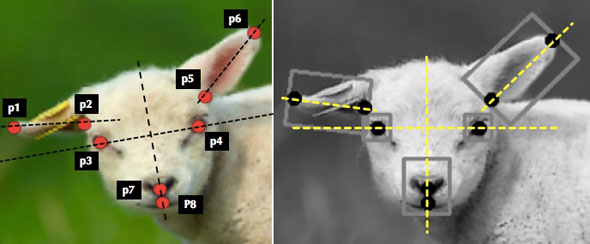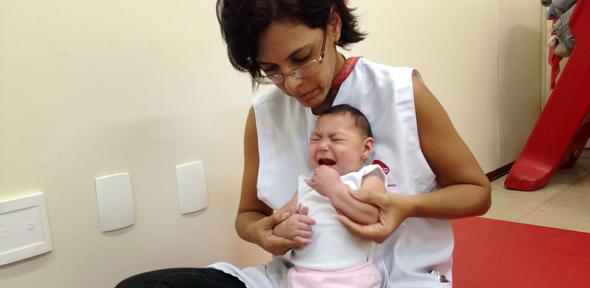
The researchers, from the University of Cambridge, have used computer simulations to predict the existence of a so-called naked singularity, which interferes with Einstein’s general theory of relativity. This is the first time that a naked singularity, which causes the laws of physics to break down, has been predicted in three-dimensional space. The findings are reported in the journal Physical Review Letters.
Einstein’s general theory of relativity underpins our current understanding of gravity: everything from the estimation of the age of the stars in the universe, to the GPS signals we rely on to help us navigate, is based on his equations. In part, the theory tells us that matter warps its surrounding spacetime, and what we call gravity is the effect of that warp. In the 100 years since it was published, general relativity has passed every test that has been thrown at it, but one of its limitations is the existence of singularities.
A singularity is a point where gravity is so intense that space, time, and the laws of physics, break down. General relativity predicts that singularities exist at the centre of black holes, and that they are surrounded by an event horizon – the ‘point of no return’, where the gravitational pull becomes so strong that escape is impossible, meaning that they cannot be observed from the outside.
For more than 40 years, mathematicians have proposed that whenever singularities form, they will always be hidden from view in this way – this is known as the ‘cosmic censorship conjecture.’ If true, cosmic censorship means that outside of black holes, these singularities have no measurable effect on anything, and the predictions of general relativity remain valid.
In recent years, researchers have used computer simulations to predict the existence of ‘naked singularities’ – that is, singularities which exist outside an event horizon. Naked singularities would invalidate the cosmic censorship conjecture and, by extension, general relativity’s ability to explain the universe as a standalone theory. However, all of these predictions have been modelled on universes which exist in higher dimensions. For example, in 2016, two Cambridge PhD students predicted the existence of a naked singularity, but their predictions were based on a five-dimensional universe.
The new research, by Toby Crisford and Jorge Santos from Cambridge’s Department of Applied Mathematics and Theoretical Physics, has predicted the existence of a naked singularity in a four-dimensional universe - three spatial dimensions, plus time - for the first time.
Their predictions show that a naked singularity can form in a special kind of curved space known as anti-de Sitter space, in which the universe has a distinctive ‘saddle’ shape. According to general relativity, universes can have various shapes, and anti-de Sitter space is one of these possible shapes.
Anti-de Sitter space has a very different structure to flat space. In particular it has a boundary which light can reach, at which point it is reflected back. “It’s a bit like having a spacetime in a box,” said Crisford. “At the boundary, the walls of the box, we have the freedom to specify what the various fields are doing, and we use this freedom to add energy to the system and eventually force the formation of a singularity.”
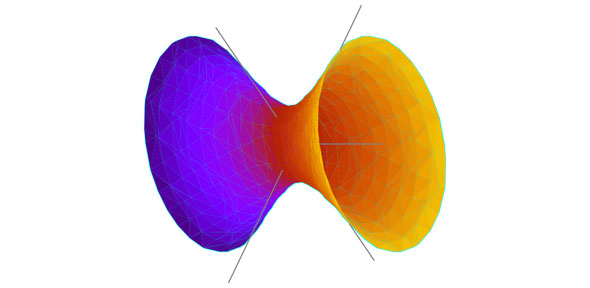
While the results are not directly applicable to our universe, as ‘forcing’ a singularity is not a procedure which is possible to simulate in flat space, they do open up new opportunities to study other theories to understand the universe. One such theory could involve quantum gravity, which provides new equations close to a singularity.
“The naked singularity we see is likely to disappear if we were to include charged particles in our simulation – this is something we are currently investigating,” said Santos. “If true, it could imply a connection between the cosmic censorship conjecture and the weak gravity conjecture, which says that any consistent theory of quantum gravity must contain sufficiently charged particles. In anti-de Sitter space, the cosmic censorship conjecture might be saved by the weak gravity conjecture.”
Inset image: Image of (1 + 1)-dimensional anti-de Sitter space embedded in flat (1 + 2)-dimensional space. Credit: Wikimedia Commons.
Reference:
Toby Crisford and Jorge E. Santos. 'Violating the Weak Cosmic Censorship Conjecture in Four-Dimensional Anti–de Sitter Space.' Physical Review Letters (2017). DOI: 10.1103/PhysRevLett.118.181101.
Researchers have shown how singularities – which are normally only found at the centre of black holes and hidden from view – could exist in highly curved three-dimensional space.

The text in this work is licensed under a Creative Commons Attribution 4.0 International License. For image use please see separate credits above.



